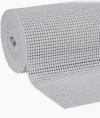dfanelli83
Level 2 Valued Member
I work out in a home gym that for the most part has everything I need (trap bar, kettlebells, pullup bar, rings, sandbags). I am looking to target my legs a little bit more (quads specifically) to put on some mass and strength. Lately, my training has revolved much around single leg stuff (step-ups, single leg squat progressions, etc.).
I am close to being able to do pistol squats. I can do singles with my heel slightly elevated on a wedge, but my bottom position knee strength is lacking a big there. Also, I know in general, pistol squats are not the best choice for mass gain, as they are limited by balance/stability. So I was looking to complement some of the single leg stuff I have been doing, by adding in the heavier weight trap bar stuff.
I've seen Alan Thrall's discussion on TB deadlifts as well as Greg Nuckols, but wanted to get further advice to see if anyone had any input. My questions center around the following two options in general. Should I focus my TB deadlifts:
Some other thoughts I have had:
I am close to being able to do pistol squats. I can do singles with my heel slightly elevated on a wedge, but my bottom position knee strength is lacking a big there. Also, I know in general, pistol squats are not the best choice for mass gain, as they are limited by balance/stability. So I was looking to complement some of the single leg stuff I have been doing, by adding in the heavier weight trap bar stuff.
I've seen Alan Thrall's discussion on TB deadlifts as well as Greg Nuckols, but wanted to get further advice to see if anyone had any input. My questions center around the following two options in general. Should I focus my TB deadlifts:
- The way that allows me to do the most weight, which would be higher hips like a deadlift, which will also target knee extension (quad) strength less. And then maybe target quads with more of the unilateral or higher reps squat pattern work?
- Or, focus on deficit TB deadlifts with a deep knee angle, which will most certainly require me to use much less weight (at least initially). For reference, if I were to do something like 3x5 with the higher hips, I'd be working in the 365 range likely, and with the more squat-like pattern, I'd have to start around 225?
Some other thoughts I have had:
- Can go with a slightly heavier weight and do the deadlift style for the concentric and then lower it under control with more of a squat pattern.
- Can start out with some heavier work deadlift style, maybe work up to a somewhat heavy set of 3-5, and then drop the weight down and do 2 sets of squat style.
- Pauses might be a good option. When I used to barbell squat in the gym, I had some good success with paused deadlifts, breathing paused squats, etc. I could potentially do some bottom position, deep knee bend overcoming isometrics or pauses first a sort of activation and then just proceed into the deadlift style for more weight.

